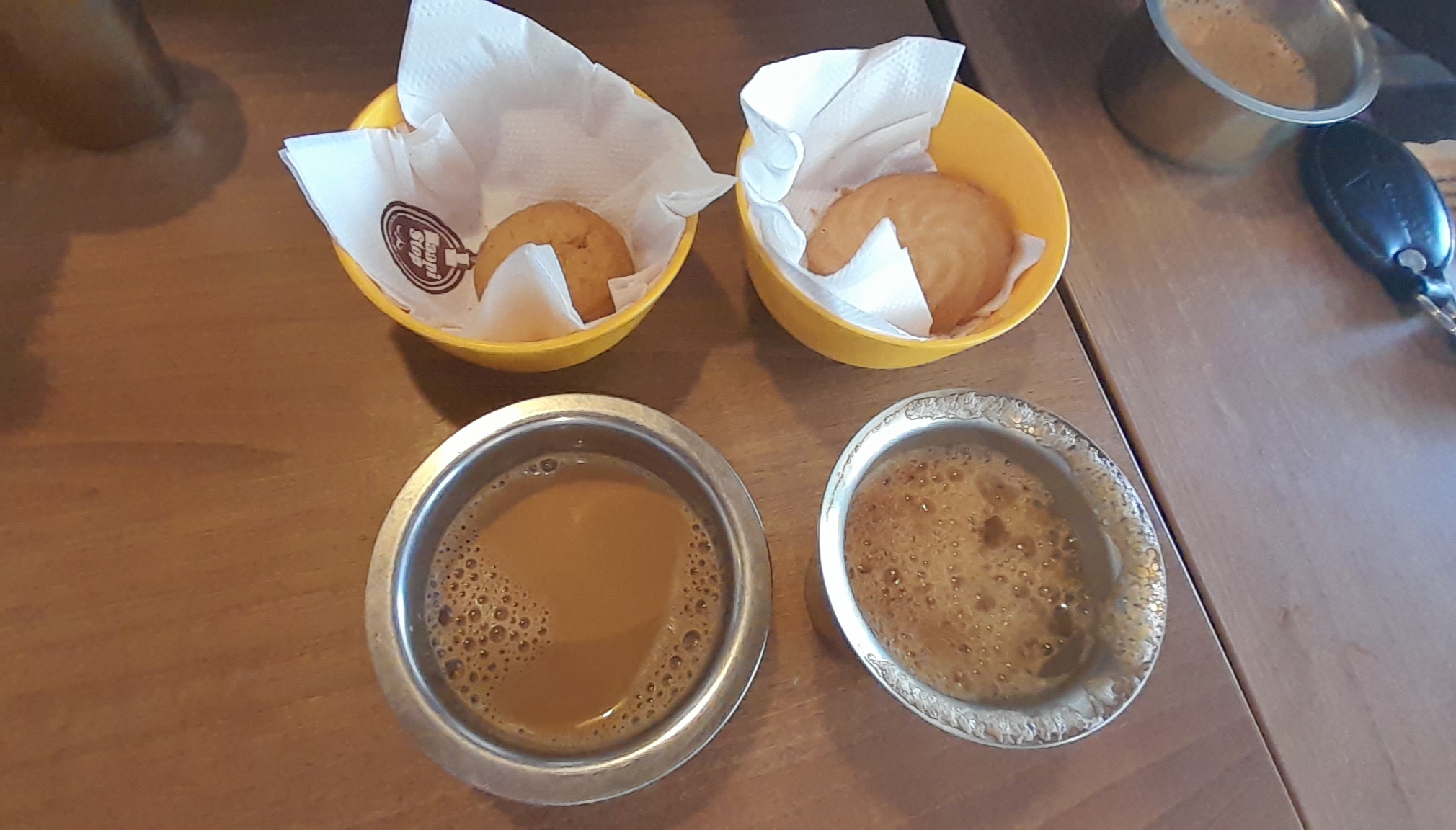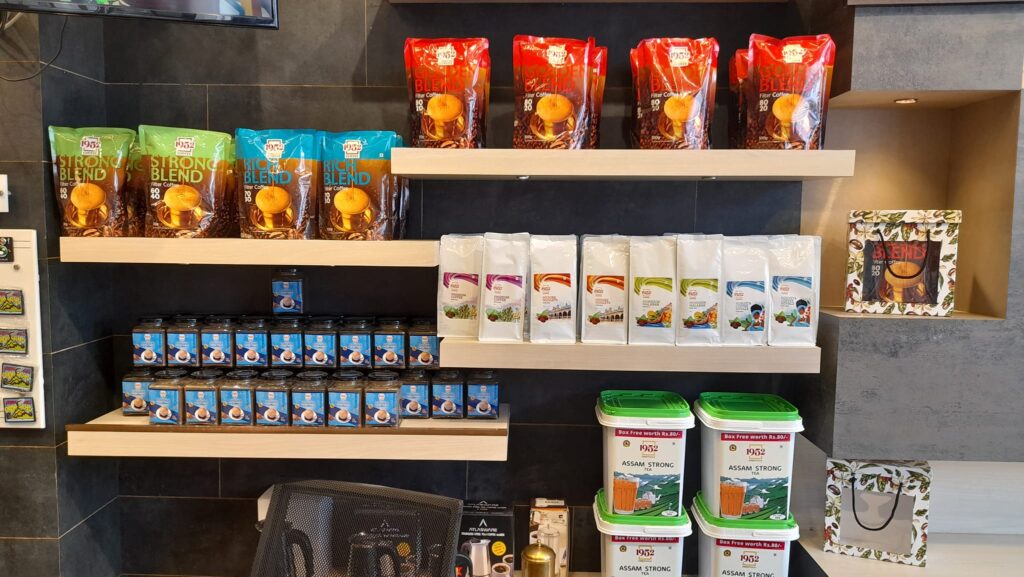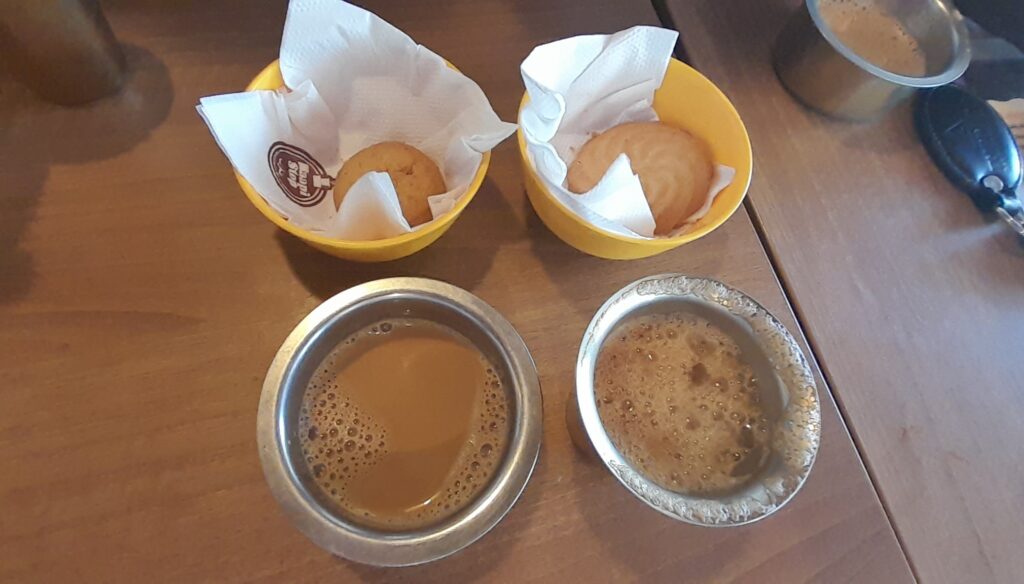Coffee: Craze, Culture, and Competition

Industry Overview: The Indian Coffee Industry
Coffee: Craze, Culture, and Competition
By- BK JHA
With nearly three per cent of the global output in 2020, India is one of the top 10 coffee-
producing nations. Due to its excellent quality and high premium in the international
markets, Indian coffee is considered among the best in the world. Both Arabica and
Robusta varieties of coffee are produced in India. Because of its robust flavour, Robusta
coffee is primarily utilised to create different blends. With a 72 per cent production
share, Robusta is the most widely produced coffee. Indian Coffee Industry has now
been leveraging its strength. The emergence of a Coffee Culture in the country has
become the main growth driver of the industry. The availability, quality, variety, access,
and affordability also contribute significantly to the rise of a new-age culture. It is not
surprising to observe that consumers aged 20 to 40 years are the main growth drivers
of the Indian Coffee industry.
The Rise of Coffee Culture
The rise of Coffee culture in India is also attributed to the cascading effects of the
pandemic. Lakhs of students who were studying abroad returned home and they were
already exposed to Coffee Culture. It is well known that Cafes in developed countries or
in the western world are catering to a new generation who sit there for the black liquid,
free WiFi, and meetings both professional and social. Moreover, in new normal work-
from-home culture triggered more coffee consumption at home. Workplaces had
already adopted the Coffee Culture.
New-age coffee chains and packaged artisanal labels like Blue Tokai, Third Wave
Coffee, Dope Coffee, and Sleepy Owl have overrun the market. The obvious expansion
of India’s coffee culture served as the catalyst for several top domestic and international
businesses to enter the Indian market. Since Starbucks’ entry into the Indian market, the
industry has been flooded with new packaged coffee companies and cafés. Café Coffee
Day (CCD), Indian Coffee House, Barista Café, Costa Coffee, Brewberrys Café, Café
Mocha, Starbucks, and the Coffee Bean are the most prominent Coffee chains in India.
Competition: Domestic versus MNCs
Starbucks has more than 30,000 locations worldwide, making it by far the most well-
known coffee chain in the world. In 2012, Starbucks Corporation partnered with the Tata
Group to launch the first Starbucks outlet in Mumbai. Over the next few years, it
recorded rapid store expansion, adding more than 250 locations across 26 cities. As
Starbucks marks its tenth anniversary in India, the market has experienced a significant
transformation. Starbucks and other worldwide coffee corporations in general face direct
competition from the impressive rise of domestic roasters and coffee shops.
Well-known Indian brands like Third Wave Coffee and Hatti Kaapi have made it
apparent that they want to capture a bigger portion of the market. Even businesses with
no prior ties to coffee are now competing for a piece of the industry. For instance, the
large Indian QSR chain ‘Haldiram Bhujiawala’ just acquired the Coffee Bean and Tea
Leaf franchise in India and intends to increase the number of its locations there.
The global leaders in the Coffee sector have been eyeing India’s rapidly growing
market. Tim Hortons, a leading Canadian Coffee chain, recently unveiled its ambitious
plan to open 250–300 shops across India. Tim Hortons wants to achieve this target in
the next five years. Costa Coffee (UK) has also realized the future potential of the Indian
market and that leads to the extension of its franchise agreement with Devyani
International Limited in India.
The Emergence of a New Ecosystem
Coffee is booming in India as its consumption has gone up significantly. Coffee has
captured the imagination of young India. Even a rough estimate of the consumption of
coffee in the country is encouraging. It is estimated that in India daily consumption of
coffee is nearly two million cups. As young India now kickstart their day with coffee, this
emerging trend catalyzes the emergence of a new coffee ecosystem. Young India has
started patronizing Coffee in more than one way. Not only they have been developing a
great taste for it but also popularizing it through social media.
The current generation is all about buzzwords. Catch-words like all-natural, low-calorie,
organic, and vitamin-enhanced, among others, are what grab this generation’s interest.
A new ecosystem is in place and the coffee estate owners are opening up. They have
realized the power of cohesive collaboration, from the roasters to the equipment sellers.
The new coffee ecosystem has started yielding positive results and the industry now
reaps the benefits. A couple of years ago, stakeholders including estate owners worked
in silos.
New Initiatives
Apex body Coffee Board of India projects the domestic coffee sector growth at 5-8 per
cent in the next five years. The Coffee Board of India has announced that it is all set to
strengthen the domestic craze for pure coffee across the country. The Board strives to
expand its reach by launching four premium coffees under the ‘India Coffee’ brand as
well as two affordable coffees under the ‘Coffees of India’ brand on Amazon. According
to media reports, four premium coffees such as Coorg Arabica Coffee (GI), Chikmagalur
Arabica Coffee (GI), 100% Arabica coffee and a blend of Arabica and Robusta under
the ‘India Coffee’ brand would be launched by the Board. Under the ‘Coffees of India’
brand affordable coffees such as 100% Arabica and a blend of Arabica and Robusta will
be included. Cohesive collaboration is also visible in this initiative of the Board which
expects this agreement with Amazon would boost domestic coffee consumption as the
Board’s coffees are sourced from the best estates to suit the taste of millions of coffee
connoisseurs across the country. The southern region of India is where coffee is
primarily grown. The majority of India’s total coffee production, or around 70%, is
produced in Karnataka. Kerala, which produces just around 23% of all coffee, is the
second-largest producer overall, but it is far behind. India produces 6% of its coffee in
Tamil Nadu, the third-largest producer. The Nilgiri district, a significant Arabica growing
region, produces about half of Tamil Nadu’s coffee. The production is less in Orissa and
the northeastern regions. The rise of coffee culture would further boost consumption in
the country and such partnerships would make a premium range of coffees available
online.
To Subscribe your copy of Tea & Coffee Trade Media (Paper Back Format) or for Ad queries, Call +91 9549404000
Recent Posts
- Tea & Coffee Trade Media releases its First Issue
- World of Coffee from Chikmagalur aims to make every Indian a coffee lover
- Follow the Quality Mantra at each step of the Production of the Green Gold- Prabhat Bezboruah
- Coffee: Craze, Culture, and Competition
- Tea Consumption: Becoming Young India’s Favourite too !
Recent Comments

World of Coffee from Chikmagalur aims to make every Indian a coffee lover

Follow the Quality Mantra at each step of the Production of the Green Gold- Prabhat Bezboruah

Coffee: Craze, Culture, and Competition

Tea Consumption: Becoming Young India’s Favourite too !

Tea & Coffee Trade Media releases its First Issue

World of Coffee from Chikmagalur aims to make every Indian a coffee lover

Follow the Quality Mantra at each step of the Production of the Green Gold- Prabhat Bezboruah

